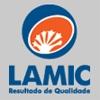Explore all the information on
Mycotoxins in feedstuffs
Welcome to the page about Mycotoxins in feedstuffs of Engormix; a source of knowledge on Mycotoxins in feedstuffs.
In 2021 mycotoxins semiannual survey, Life Rainbow Biotech randomly collected 230 feed samples of raw materials and feed mills in farms and analyzed. The samples were tested for Aflatoxins (B1, B2, G1, and G2), Zearalenone, Fumonisins (B1, B2, and B3) and Deoxynivalenol (DON) by the ELISA Mycotoxin analysis kit. Results: 230 feed samples collected, and 78% were contaminated with deoxynivalenol and 86% contaminated with Aflatoxins (table 1). The maximum concentrations of...
Comments : 0
Recommendations: 2
In this interview, Olga Averkieva, Ph.D. Global Category Manager Mycotoxin Management at Adisseo, speaks to Engormix about the risk caused by Mycotoxins in the feed and What Adissseo can offer through MycoMan® App
...
Comments : 2
Recommendations: 6
835 µg/kg Fumonisin B1 LC-MS 290 µg/kg Fumonisin B2 LC-MS 43 µg/kg Zearalenone LC-MS Dear all, Are these level normal for layer breeder feed? If not, what is the normal level for these toxins in poultry feed & what will be the negative effect of it on poultry health if it is high? ...
Comments : 0
Recommendations: 0
The corn harvest is later than it has been any time in recent memory, and the prolonged moist conditions are conducive for molds to develop on grain in the field. Over the past few days we have received numerous reports of ear rots developing in the field and questions concerning mycotoxin production when conditions are cool but wet. Cladosporium ear rot Apart from Fusarium, Gibberella and Diplodia ear rots, we are starting to see and hear of more reports of Cladosporium...
Comments : 1
Recommendations: 0


Mycotoxin Testing in the Feed Chain: A Risk Prevention Strategy for Raw Material Suppliers, Grain Storage Facilities and Processors, and Feed Manufacturers
Suggested link
Sorghum (Sorghum bicolor) is an important crop for human consumption, animal feed, and bioenergy, and the fifth most important cereal in the world after wheat, rice, maize, and barley. From its domestic origins in Africa, the crop has spread throughout the world and now is cultivated on all inhabited continents. In Thailand, sorghum is grown in all regions of the country, but most commonly in the central and northeastern regions. Much of the sorghum grown in Thailand is exported, although...
Comments : 0
Recommendations: 0
1. Introduction Fusarium head blight (FHB) is a global disease affecting small grain cereals including wheat, barley and oat [1–4] The disease is caused by several Fusarium species of which Fusarium graminearum Schwabe is the primary etiological agent in wheat crops in Canada based on the frequency of isolation and impact on grain yield and quality [5–8]. In addition to a reduction in yield, F. graminearum produces the type B trichothecene mycotoxins, deoxynivalenol...
Comments : 0
Recommendations: 0
In 2021 mycotoxins semiannual survey, Life Rainbow Biotech randomly collected 163 feed samples of raw materials and feed mills in farms and analyzed. The samples were tested for aflatoxins (B1, B2, G1, and G2), zearalenone, fumonisins (B1, B2, and B3) and deoxynivalenol (DON) by the ELISA Mycotoxin analysis kit. Results: 163 feed samples collected, and 74.8% were contaminated with Zearalenone and 71.8% contaminated with Aflatoxins (table 1). The maximum concentrations of...
Comments : 3
Recommendations: 1
Cargill analyzes over 300K samples a year for the presence of mycotoxins worldwide. Gain expert insight, explore the characteristics of mycotoxins, and review the data that can be applied to develop a risk-based mycotoxin control plan.
Featured speakers include: Don Giesting , Innovation Lead for MicroNutrition at Cargill Animal Nutrition, North America; Clement Soulet , Global Category Manager for Additives at Cargill Animal Nutrition, Global; and...
Comments : 0
Recommendations: 0


Mycotoxin Testing in the Feed Chain: A Risk Prevention Strategy for Raw Material Suppliers, Grain Storage Facilities and Processors, and Feed Manufacturers
Suggested link
The purple race of Zea mays L. is a native plant from America. It was one of the main foodstuffs of indigenous peoples in the pre-Columbian era, and several medicinal properties have been attributed to it; hence its industrial and export potential. Chemical components of the purple maize are essences, salicylic acid, fats, resins, saponins, potassium and sodium salts, sulfur and phosphorus, and especially phenolic compounds (ARROYO et al., 2007). Mycotoxins are toxic secondary...
Comments : 0
Recommendations: 1
INTRODUCTION The Food and Agriculture Organization (FAO) forecasts that the human population will increase by 30% by 2050 (FAO, 2019) with corresponding increase in demand for food. Animal protein, the largest component of human food is entirely dependent on livestock production channels as its source. Over 70% of the cost of livestock production is feed, and the second largest component and cost of feed is the crude protein, a segment that has been challenged for its...
Comments : 0
Recommendations: 0
Introduction The gastrointestinal (GI) tract of humans and animals is populated with a diverse group of microbes known as the microbiota that include bacteria, fungi, archaea, protists, and viruses, with bacteria being the most predominant [1, 2]. The bacterial microbiota is well known to be critically involved in host physiology and immune development [1, 2]; however, the role of the fungal community, known as the mycobiota, that plays in health and diseases is less studied and...
Comments : 0
Recommendations: 0
1. Introduction Intensive agriculture and climate change can lead to the proliferation of microscopic fungi, which can cause severe economic and health damage through their toxin production. Fusarium species infect cereals, such as wheat, barley, oats, and maize, worldwide. According to the Biomin Worldwide Mycotoxin Survey [1], the percentage of positive samples of finished feeds in Europe was 65% for deoxynivalenol (DON) with an average of 268 µg/kg (maximum: 18,300...
Comments : 0
Recommendations: 1


Mycotoxin Testing in the Feed Chain: A Risk Prevention Strategy for Raw Material Suppliers, Grain Storage Facilities and Processors, and Feed Manufacturers
Suggested link
The safety and quality of feed materials, such as grain, is a high-profile topic of great importance. Grain is an important and significant source of contamination in the food chain and it also carries the risk of the consumers being exposed to toxins. As grain storage is an integral part of the food and feed supply chain, the storage operations of grain should include the control of any potential hazards (insects, molds, mycotoxins etc.) which could compromise the safety and quality of...
Comments : 1
Recommendations: 0
1. Introduction Deoxynivalenol (DON) is a secondary metabolite produced by Fusarium fungi. DON is the most widespread mycotoxin found in grains such as wheat, rye, barley, maize, oats, and their byproducts [1,2]. A recent survey, reported that DON is the most frequent contaminant of feedstuffs in Europe [3]. From 4311 samples evaluated, 63% were positive, with an average positive level of 0.6 mg/kg and a maximum of 40.7 mg/kg. For poultry feeding stuffs, the recommended maximum...
Comments : 0
Recommendations: 2
Join Carlton and Clint for a brief discussion around Myco 5-in-1 PLUS - VICAM's answer to global grain and feed producers and handlers who are impacted by the need to monitor more than one mycotoxin in a non-laboratory testing environment. Then, watch the procedure from start to finish ...
Comments : 0
Recommendations: 1
...
Comments : 0
Recommendations: 0


Mycotoxin Testing in the Feed Chain: A Risk Prevention Strategy for Raw Material Suppliers, Grain Storage Facilities and Processors, and Feed Manufacturers
Suggested link
1. Introduction
The appearance of new transmittable plant diseases is determined by anthropogenic and conservational change, including changes in trade, land use, and climate [1–4]. The growth of infected plant material through trade in plant products, germplasm, grafts, and live plants has been recognised as the greatest contributing factor to the emergence of new plant diseases [5–7]. A pathogen may be introduced without disease emergence initially...
Comments : 0
Recommendations: 0
Introduction The poultry industry in Nigeria is an essential subsector of agriculture that provides food, employment, and other economic resources for the country (Ezekiel et al. 2012a). Livestock production can be threatened when feeds are contaminated by fungi and their toxic metabolites. Several mycotoxins, including aflatoxins (AFs), cyclopiazonic acid (CPA ), fumonisins (FUMs ), nivalenol (N IV ) and zearalenone (ZEN) have been reported to contaminate poultry feed and their...
Comments : 0
Recommendations: 1
The mycotoxin contamination of grain harvested in a single year can differ from the mycotoxin patterns and levels of previous years in the same climatic region. Therefore, buying the newly harvested grain is like a betting game for the producer of animal feeds who has to deal with unknown, 'on-fire' contamination. Our MycoMan range of services allows the risk from the raw materials to the animals to be identified.
...
Comments : 0
Recommendations: 3
1. Introduction Avena sativa, commonly known as oats, is a cereal belonging to the Poaceae grass family that has traditionally been used as animal feed, particularly for horses and dairy cows. In recent years, the beneficial nutritional and physiological effects of oat products have generated an increase in nutrition-conscious consumer demand. The characteristic feature of oat grains is the favourable profile of amino acids, vitamins, minerals, and essential unsaturated...
Comments : 0
Recommendations: 0





















